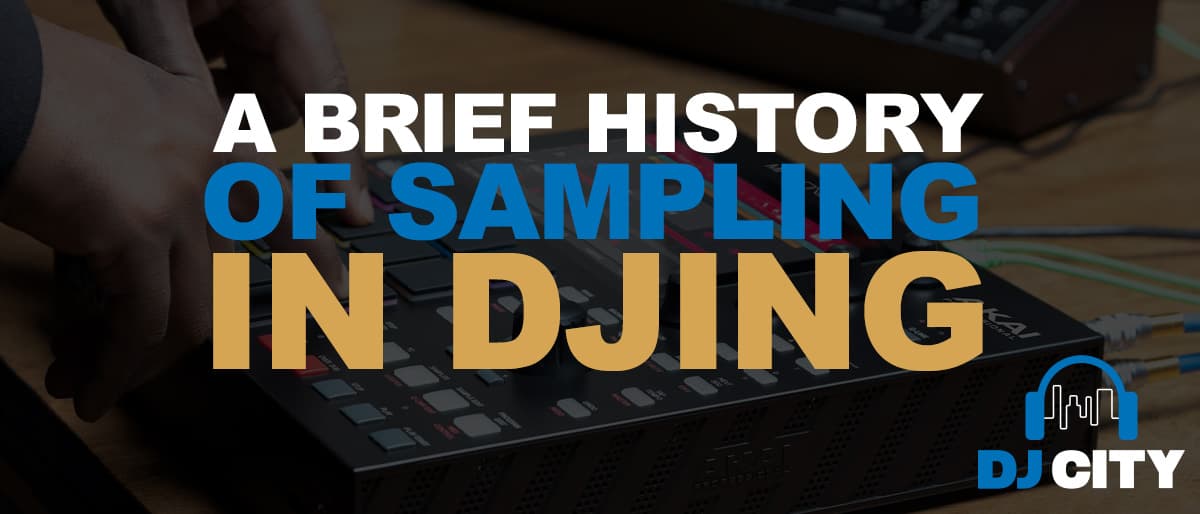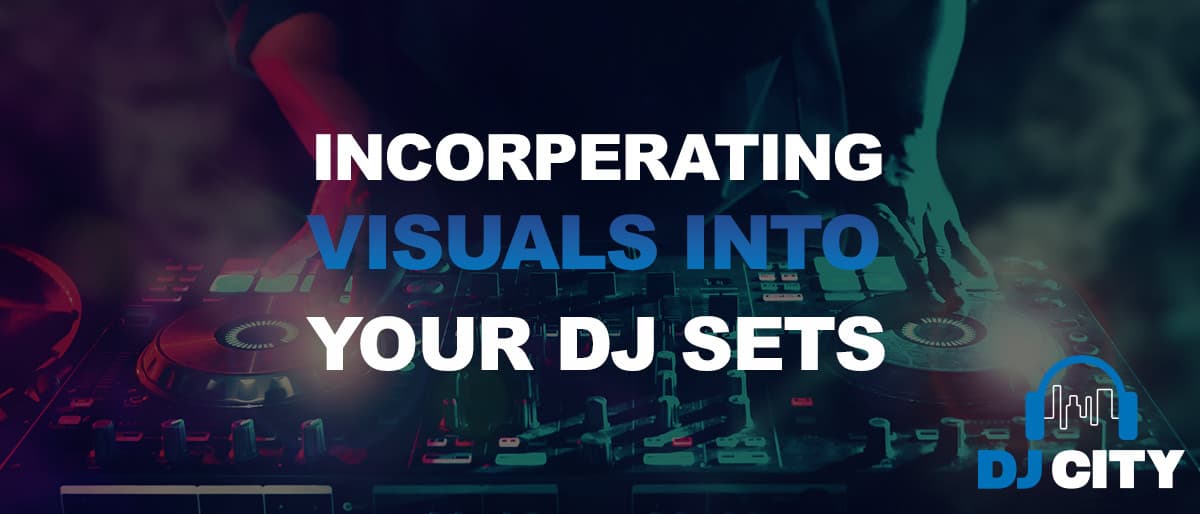
A Brief History of Sampling in DJing
There are many different techniques and methods employed by DJs to create original, heart-thumping, and awesome musical tracks. Sampling is one of those techniques.
Like many aspects of being a DJ, the development of sampling occurred over time and took different forms during different periods. In this article, we’ll explore a condensed history of sampling and how it can be used by DJs and in music creation in general.
Sampling in Music
What is sampling?
In terms of music and DJing, sampling is the use of a part of a sound recording produced by someone else in another recording. This portion of the original track is referred to as a ‘sample’.
Samples can really contain any audio element, including but not limited to:
- Bar(s) of music
- Rhythms
- Melodies
- Sounds
- Speech
How is sampling done?
Nowadays, most artists and musicians use some form of integrated hardware or software to incorporate sampling into their music. As technology evolves, more efficient, seamless, and simple ways of both creating original music and sampling are developed.
Two common pieces of hardware/software used in sampling include:
Samplers – either an electronic or digital musical instrument that utilises the recording of sounds.
DAWs – digital audio workstations are more general application software that can be used for producing, recording, or editing audio files of all types.
How is sampling used?
The sample incorporated in a DJ’s track can be used in a wide variety of creative ways depending on what suits your preferences and the music in question.
Some effects applied to samples include:
- Layering
- Equalisation
- Speeding up or slowing down
- Re-pitching
- Looping
- Other forms of audio manipulation and effects
Why is sampling important?
Sampling was a significant development and allowed artists to exercise greater creativity in the sounds of their own tracks, the way in which they could integrate the themes of other music and highlight the message of their art.
History of Sampling
Origin of the Term
The term “sampling” originated in the late 1970s, even though the origin of the actual technique predates that. When the creators at Fairlight CMI (Computer Musical Instrument) produced a synthesizer that could both record and playback short sounds, they needed to create a term that could refer to what we now call sampling. Over time, as sampling developed in the way it was used and became more and more common, other audio equipment producers started creating standalone gear specifically for sampling.
The Beginnings of Digital Sampling
In many ways, digital sampling emerged in the 1960s with the emergence of the previously mentioned sampling machines as well as the Computer Music Melodeon by Harry Mandell. Since the introduction of these technologies, sampling grew in popularity and evolved over time into what we have today.
In many respects, however, sampling pre-dates the emergence of digital equipment and goes back to at least the 1940s to a French composer by the name of Pierre Schaeffer.
Musique concrète
During the 40s, Schaeffer began to use pre-recorded samples of music as part of his composing. Often using many of the manipulative techniques we still use today, such as looping, changing speed and pitch etc, Schaeffer relied on the relatively primitive (at the time) invention of the tape recorder. Dubbed “musique concrète”, it started the audio movement that would snowball over time into modern-day sampling.
The Chamberlin
The next decisive leap in the development of this musical technique came in the form of The Chamberlin. This unique instrument was invented by Harry Chamberlin and was basically the very first tape replay instrument. Developed into an electro-mechanical keyboard, one could loop tapes of a variety of pre-recorded instrument sounds. While at the time this was a costly and somewhat limited activity, over the years the industry has substantially improved.
Bill Fransen
The most significant evolution of the Chamberlin came in the form of the more widely known Mellotron. In the early 1960s, Bill Fransen who was a known investor and businessman began to produce an improved version of the Chamberlin on a mass scale. The first iteration, the Mark 1 Mellotron, was a copy of the original instrument, but over the next few decades Fransen’s device improved and changed into the digital versions we have today.
The Rise of Hip Hop and DJing
Next came the 1970s and the 1980s and with it the rise in the musical genre of hip hop and the technique of disc jockeying a.k.a. DJing. Born from the South-Bronx area of New York City, DJs and hip-hop artists brought a fresh and original approach to the way in which sampling could be used. Instead of just relying on isolated samples of pre-recorded material, the samples were skilfully manipulated to create loops and rhythms for new songs and beats. Coupled with the rise in rapping as an art form and the fact that it naturally lent itself to the style of hip hop dancing, the technique of sampling was changed for good.
Enter the Studio
Circling back to Fairlight CMI, companies began to incorporate the newly invented digital samplers in their recording studios. Thanks to some industry heavy hitters, like Stevie Wonder and his album “Journey Through the Secret Life of Plants”, the use of digital samplers spread far and wide. Over time these machines became increasingly more sophisticated and gave way to the digital audio workstation (DAW), incorporating both pieces of equipment into one ultimate unit.
At the time, the capabilities of this new equipment and the creativity it enabled for musicians and DJs were mind-blowing.
Going Portable
As sampling and digital samplers began to take the DJ and music industry by storm, more and more artists began to engage in the technique and use the digital samplers. During the 1980s, digital samplers became more and more portable. Instead of the large and bulky machinery, the samplers began resembling compact and mobile little units. This enhanced accessibility meant a subsequent explosion in popularity and many more musicians began to experiment and create using sampling.
Today
With almost 80 years of development behind them, DJs are best positioned to benefit from the evolution of sampling. With endless creative potential and ever-improving technology, musicians of the 21st century can now mix, sample, and create music from portable laptops, tablets, and smartphones.
Hardware and software continue to benefit from ongoing innovation and just about every commercial pop or hip-hop song that’s now played on the radio draws at least indirectly from the evolution and trend of sampling.
Sampling and Copyright – Legal Implications
In all creative industries, music copyright infringement is a big deal. As you can imagine, many lawsuits and legal debates have occurred over the lifespan of sampling, especially as it became more widely used and equipment more widely accessible.
Time and precedent have (fortunately) helped to clarify several issues. Of course, anyone publishing samples of another artist’s work in their music without permission can be subject to legal repercussions. Most artists tend to fly under the radar because either the sample is not easily recognisable or they’re not making enough money to get noticed by the original artist’s legal team.
Nonetheless, it is very important that you understand what is and isn’t copyright infringement and ensure that you play by the rules. There are many sample libraries online that allow you to purchase musical samples without having to pay royalties.
Start Sampling Today
Whether you’re ready to be the next game-changer in the evolution of sampling or just want to dip your toe in and experiment musically, DJ City has all the DJing and studio equipment you need. We’re one of Australia’s largest providers of audio equipment and we would like nothing more than to help you start sampling today. If you can’t find what you’re looking for, just get in touch with our friendly team.









